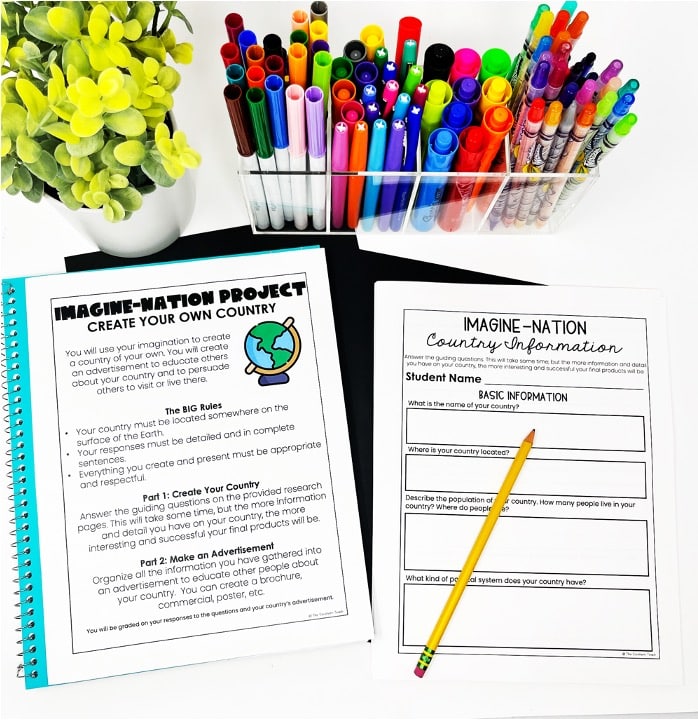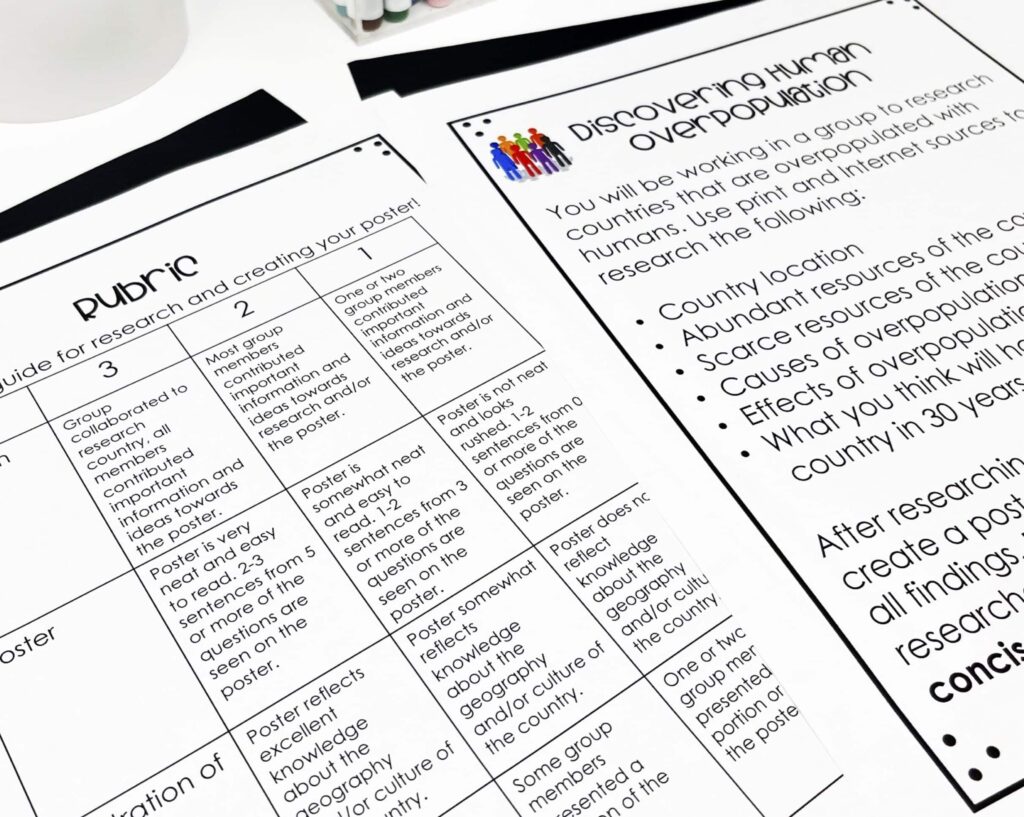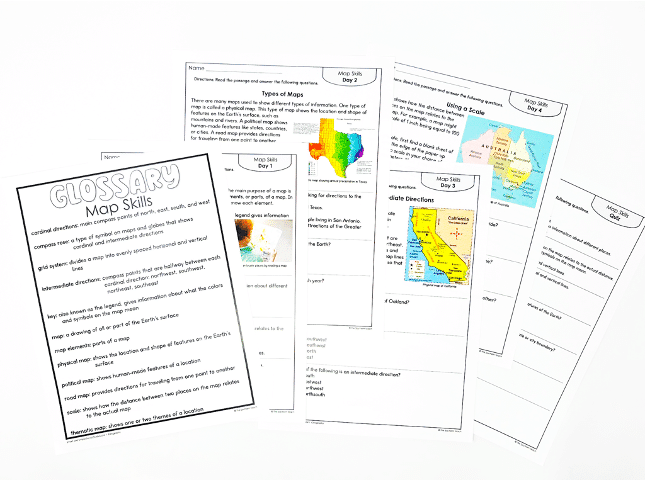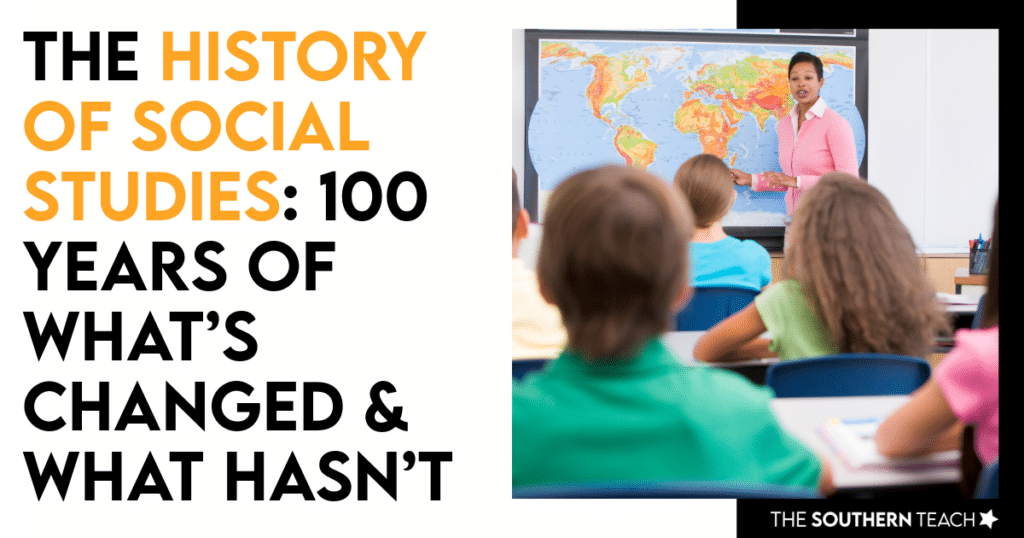Share This Post:
Geography is more than just learning about maps; it’s about understanding how our world works and how people fit within it. Teaching geography to third, fourth, and fifth graders lays the foundation for a deeper comprehension of global connections.
Let’s explore some simple, yet effective tips and activities to make geography a favorite subject for your students.
1. Start with the Geography Skills Basics
Begin by introducing basic geography concepts like maps, continents, oceans, directions, cities, and states. Use maps and globes to help students visualize these ideas and get hands-on with exploring.
Have students create their own maps of imaginary continents, including features like mountains, rivers, and cities.
This can be extended into a “Create a Country” project where students invent their own country, complete with a government and history. This activity not only teaches geography but also fosters creativity and critical thinking.

2. Make It Relevant
Another tip for teaching geography skills is to connect geography to students’ lives by discussing local geography, landmarks, and what makes their community unique. Show how geography affects daily life.
Organize a walking tour of your local school or nearby parks to note important landmarks and geographical features.
You could also plan a field trip to a local landmark with historical significance, making the learning experience more tangible and memorable.
3. Learn About Different Cultures
Introduce students to cultures from around the world using stories, videos, and guest speakers to showcase global diversity.
Host a cultural fair where students research and present information about different countries, including their geography, customs, and traditions.
This activity can culminate in a showcase where students can bring in food, create posters, and share what they’ve learned, fostering a sense of global awareness and appreciation.

4. Use Technology
Some geography skills to teach your students are to leverage digital tools like interactive maps to make learning more engaging. Google Maps and virtual tours can bring geography lessons to life.
Use Google Earth to explore famous landmarks and geographical features worldwide. Start by finding your school, then move on to local places students frequent, and eventually explore global landmarks like the Eiffel Tower or the Great Wall of China.
This activity allows students to experience virtual field trips without leaving the classroom.
5. Encourage Questions
Foster curiosity by encouraging students to ask questions and explore topics on their own.
Implement a “Geography Wonder” activity where students can ask anything related to geography. These questions can be researched and discussed in groups or as a class, promoting active learning of geography skills and critical thinking.
6. Connect with Other Subjects
Show students how geography skills can tie into other subjects such as history, science, and math. This integrated approach can make learning more meaningful and practical.
Compare the populations of different countries and cities over time to incorporate math and history. For example, track the population growth of a city like New York from the 1800s to the present.
This helps students understand the historical context and develop their analytical skills.

7. Practice Map Skills
Teach students how to read maps effectively, including using symbols, legends, and scales. Provide plenty of map-based activities for practice.
Create a scavenger hunt where students use a map to navigate around the school or local area, locating specific landmarks or points of interest.
This is a fun activity, especially at the beginning of the school year, to familiarize students with their environment.

8. Understand the World
Help students develop a sense of global citizenship by discussing current events and world cultures. Encourage them to think about their place in the world and how they can make a difference.
Hold discussions or debates on current global issues such as climate change or migration. Explore how humans adapt to or modify their environments and the resulting consequences.
These discussions can include historical examples or current events, allowing students to consider different perspectives and potential solutions.
Additional Resources
To support your teaching, consider using my Geography Daily Passages. These passages cover various geography topics and are designed to reinforce reading comprehension while integrating social studies.
The resource includes 48 passages, quizzes, a glossary, and a unit pacing guide. Topics range from map skills to natural hazards and adapting to the environment, making it suitable for multiple grade levels.

Conclusion
Teaching geography skills to upper elementary students can be both exciting and rewarding! By keeping lessons simple, relevant, and encouraging exploration, you can help students develop a deeper understanding of the world and their place in it.
With a little creativity and enthusiasm, geography can become a favorite subject for your students.
There are so many other important social studies concepts to share, and you can view them all here on my website.
kirsten hammond
Kirsten is a former 3rd and 5th grade teacher who loves helping upper elementary teachers by creating resources and sharing ideas that are engaging, research-based, and TEKS-aligned. She is a work-from-home mama of 3 rambunctious little ones and loves running, true crime, and lots of coffee.


















